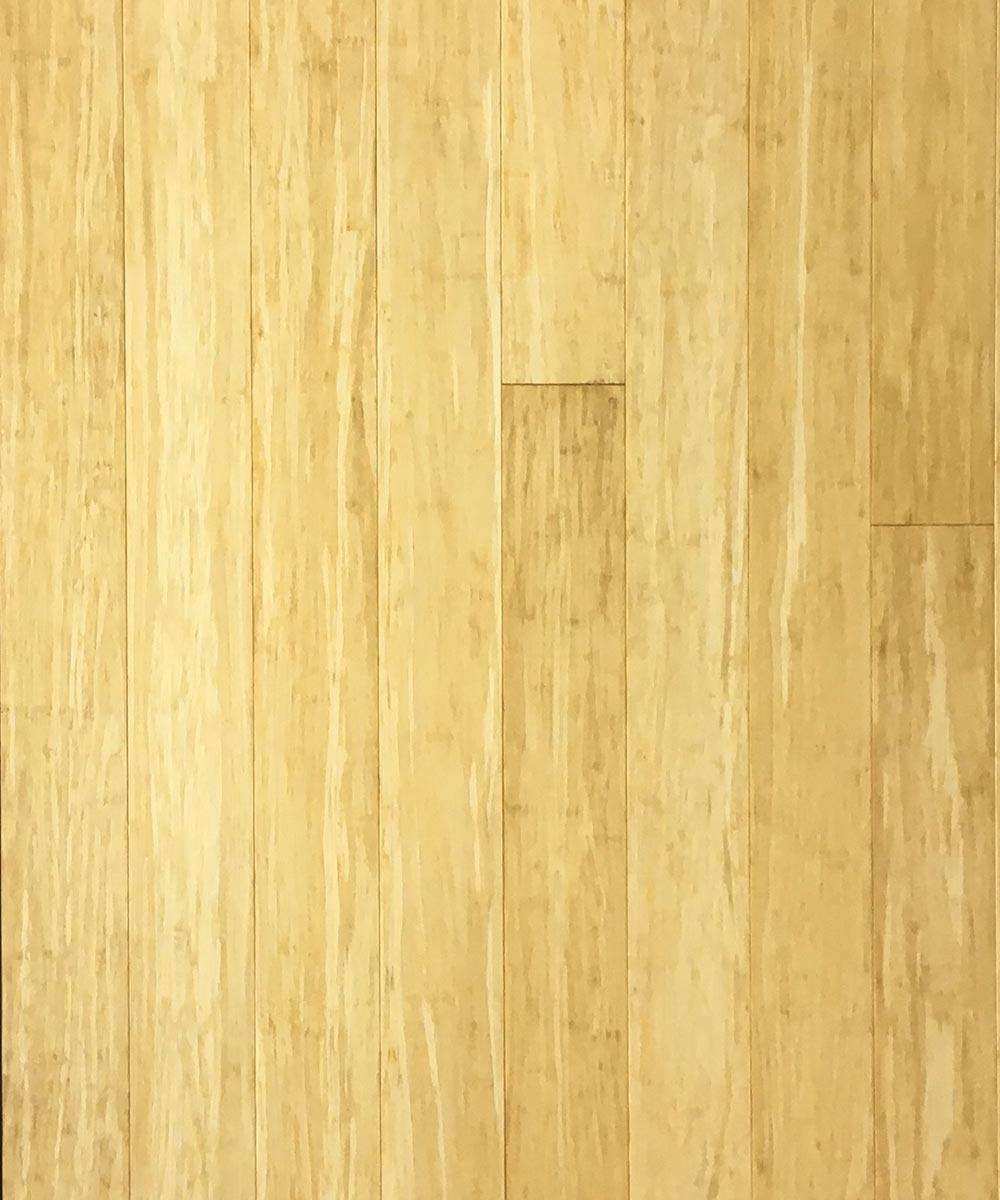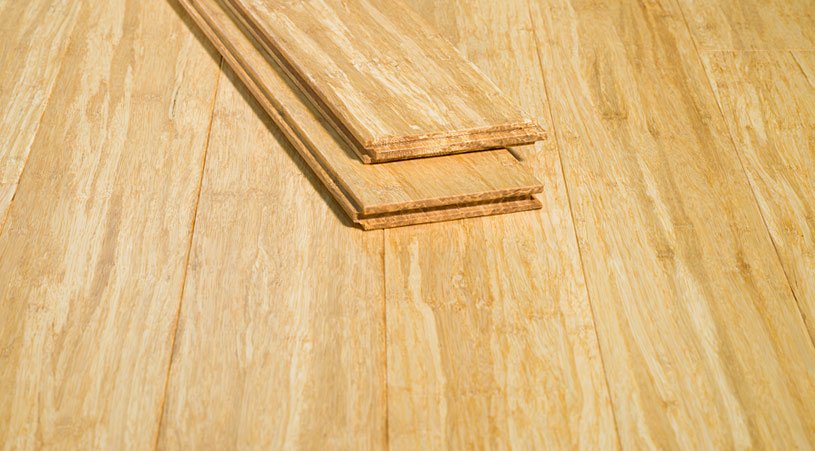How do you actually feel with regards to How To Install Bamboo Flooring?

Bamboo flooring is popular for several homeowners due to its benefits. It has come to be the major choiced floor for company and also homeowners whenever there is requirement for sustainability.
Nonetheless, bamboo much like timber, is susceptible to dents as well as fracturing when humidity levels change.
Are you thinking concerning bamboo flooring for your house? We will certainly likewise discuss the various kinds of bamboo flooring offered on the market.
Sorts Of Bamboo Flooring
There are three standard choices: strand-woven, upright, as well as straight. Homeowners can select which sort of bamboo flooring to purchase based upon their traits. Likewise, the buyer's designated visual influences the selected Bamboo flooring kind.
Solid - Vertical Bamboo Flooring
Thin strips of dry bamboo wood glued vertically and pressed using high heat as well as pressure create this kind of bamboo flooring.
The thinnest side of the bamboo slabs will be in a vertical form. After that, a firm bonding, pressing, and also lamination will certainly follow. Due to their method of signing up with, the bamboo strips feature a slim grain pattern.
The good idea regarding this kind of bamboo flooring is that it is sturdy as well as very budget friendly. It offers a sophisticated and also classy floor surface. But it is not commonly readily available.
Strong - Straight Bamboo Flooring
You will certainly observe that this type is practically the same as vertical bamboo flooring. It has a slight variant. Straight bamboo is one of the most popular kinds of bamboo flooring.
It is made by drying out significant strips of bamboo, cutting these bigger pieces into thinner strips, and then gluing them to form slabs. The boards will certainly then go through pressure and heat to guarantee they are well fastened.
Natural bamboo has a lighter shade. While carbonized bamboo will certainly be less tough than routine bamboo, if you require a darker color, it may do you excellent.
Strand Woven Bamboo Flooring
Shredding the bamboo to draw out the fibers is just one of the more luring steps in generating strand-woven bamboo floors.
The bamboo fiber is typically combined with an adhesive after it's made to a pulp. The material is then weaved and also pressed together under excellent warmth, as the name suggests.
After making upright and also horizontal bamboo, the strips serve to develop hair woven bamboo. The eco-conscious customer might discover this feature appealing. The factor is that it ensures that the entire bamboo stalk creates extremely little waste.
Engineered Bamboo Flooring
Both strong as well as crafted bamboo flooring alternatives are readily available. As soon as the bamboo timber fits, it isn't simple to distinguish between them.
Yet their distinctions are due to their making. For example, engineered bamboo wood has a thin plywood support.
However, whether engineered or strong, bamboo flooring is strong, durable, and eye-catching.
Engineered bamboo flooring utilizes the drifting timber floor over a slim foam base. They may likewise remain in the kind of broad slabs. For example, they are readily available in sizes as much as 19 cm.
When Choosing Bamboo Flooring, functions As Well As What to Maintain in Mind
With a multi-layered layer, bamboo flooring will be pretty resilient. Keep in mind that future touch-ups might require a much more competent flooring professional.
Applying your coating will make matching repairs less complicated as soon as set up in your home. However the finish will certainly not last as long as factory coatings.
Aside from that, right here are some amazing attributes of bamboo flooring.
Resilient
Bamboo flooring is not produced equivalent. There are numerous kinds of bamboo, and also the different techniques made use of to transform it into planks affect its sturdiness.
Bamboo, like wood flooring, can become prone to tear and also wear over time. Additionally, damaging, splitting, and also various other damage might take place. You can additionally sand some bamboo to resemble wood, however not all.
Low-cost Maintenance
You can maintain bamboo flooring in good condition by cleansing as well as damp wiping. So regardless of being a lot more prone to scrapes, bamboo flooring is extremely simple to maintain.
You may obtain bamboo floors that are as good as brand-new by sanding them down as well as using a fresh layer of paint.
Eco-Conscious
This flooring comes from an all-natural plant called the bamboo plant. When contrasted to other tree varieties used to make hardwood flooring, bamboo expands more as well as faster.
Profits
It's straightforward to know why bamboo flooring has come to be extra well-liked nowadays. For practically any type of house, bamboo uses lots of strong as well as sound options for the atmosphere. Bamboo floor could be the ideal option for updating your flooring.
We will certainly likewise discuss the various kinds of bamboo flooring available on the market. Homeowners can pick which type of bamboo flooring to buy based on their traits. Straight bamboo is one of the most preferred types of bamboo flooring.
While carbonized bamboo will certainly be less hard than normal bamboo, if you require a darker shade, it may do you excellent. After making vertical and also horizontal bamboo, the strips serve to produce hair woven bamboo.
Bamboo Flooring
Manufacture of Bamboo Flooring
Stranded bamboo is made by shredding the bamboo stalks into small strands, which are compressed into sheets using heat and resin binders, then cut into planks to use as building materials. This form of flooring is available both as tongue-and-groove planks that are nailed down, as well as planks that float over the underlayment. This is a premium form of bamboo flooring, available in many colors.
Horizontal bamboo flooring is manufactured by cutting the strands into thin strips which are then glued together to form planks. This type of flooring has a "grain," since the long stalk fibers are visible in the flooring. This type of bamboo is not as hard or durable as stranded bamboo, but it can have a very striking appearance. It, too, is available both in nail-down planks and as floating floor planks.
Engineered bamboo flooring is made by bonding a thin layer of bamboo onto a plywood or MDF core. This flooring is comparable to engineered hardwood and is installed in the same way—usually with click-lock planks that float over a foam underlayment. It is the least expensive (and least durable) form of bamboo flooring, and it cannot be refinished.
Unless it is stained, most bamboo flooring has a natural blonde or amber color that resembles unfinished maple or birch, but darker tones are available through a process called carbonizing, which entails subjecting the planks to high temperatures. While the color can be very attractive, carbonized bamboo is softer than uncarbonized forms, and is more susceptible to scratching.
Eco-Friendliness
Environmentally conscious consumers are often drawn to bamboo as a wholly renewable resource. Unlike the hardwood lumber industry, where trees can take decades to mature, bamboo stalks grow so fast that there is little environmental liability to the harvest practices. Moreover, bamboo stalks that are cut simply continue to grow and replenish themselves so that they can be harvested.
But the manufacturing process creates other environmental concerns. Bamboo floor planks are manufactured by slicing or shredding the stalks of bamboo grass plants and then compressing the pulp back together using heat, pressure, and a resin-based adhesive identical to those used in many other flooring products. This adhesive often contains urea-formaldehyde that can outgas into the air.1
The level of adhesive used and the amount of toxins emitted will vary, depending on how the bamboo planks are manufactured. Cheaper products may contain more formaldehyde, while more expensive products may use alternative materials in the resins. The amount of formaldehyde used in bamboo flooring is similar to that found in engineered hardwood flooring or MDF sheathing, and it tends to be a problem only for sensitive individuals.2 But if this concerns you, look for bamboo products labeled as formaldehyde-free.
Bamboo Flooring Cost
This material is priced at about the same level as most hardwood floors. You can find bamboo flooring products ranging from about $2 to $8 per square foot, with a national average of $3.84 per square foot. Installation costs for bamboo flooring are much the same as for hardwood flooring. On average, figure on adding about $4 per square foot for installation labor in addition to the cost of materials. You should be able to get a good-quality bamboo installed for less than $10 per square foot, including materials and labor.
https://www.thespruce.com/benefits-and-drawbacks-of-bamboo-floors-1314694

Do you really like reading up on How to Clean Bamboo Floors? Create a comment down below. We will be pleased to hear your feelings about this review. We hope that you visit us again later on. Are you aware of someone else who is in the market for What to Know About Bamboo Flooring Before You Install? Why not share it. I love reading our article about How to Clean Bamboo Floors.
Comments on “Bamboo Floors - Everything You Need To Know”